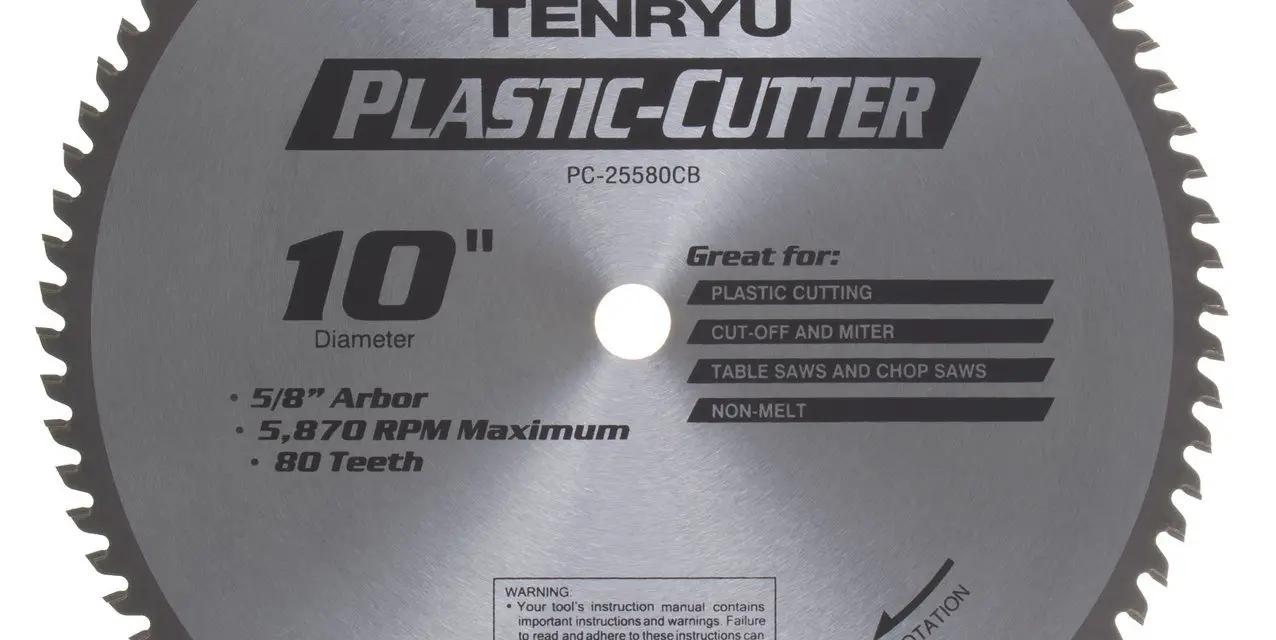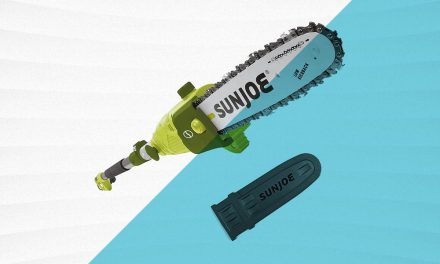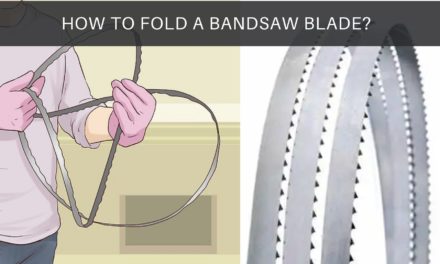To cut plastic, use a saw blade specifically designed for cutting plastic. Plastic can be a challenging material to cut, requiring a blade that is specifically designed for this purpose.
Using the wrong type of saw blade can lead to melting, chipping, or uneven cuts. To ensure clean and precise cuts in plastic, it is essential to use a saw blade with fine teeth and a high tooth count. These blades are usually made of carbide, which is a durable material that can withstand the heat and friction generated during cutting.
By using the correct saw blade, you can achieve smooth and accurate cuts in plastic materials, making your projects or tasks easier and more efficient.
Understanding The Different Types Of Saw Blades For Plastic
Understanding the different types of saw blades for cutting plastic is essential to achieve precise and clean cuts. Choose a saw blade specifically designed for plastic, such as a fine-toothed circular blade or a carbide-tipped blade, to minimize chipping and melting during the cutting process.
When it comes to cutting plastic, using the right saw blade can make all the difference. Each type of saw blade is designed for specific purposes, offering unique features that cater to different cutting needs. In this section, we will explore the three main types of saw blades for plastic: circular saw blades, jigsaw blades, and scroll saw blades.
Let’s dive in and understand their characteristics, applications, and benefits.
Circular Saw Blades:
- Carbide-tipped circular saw blades: These blades feature carbide teeth, which are extremely durable and designed to withstand the rigors of cutting plastic. They offer superior cutting performance and can effortlessly slice through a variety of plastic materials.
- Fine-toothed circular saw blades: These blades have a high tooth count, usually ranging from 80 to 120 teeth per blade. The closely spaced teeth ensure clean and accurate cuts, making them ideal for cutting thin plastic sheets and delicate plastic materials.
Jigsaw Blades:
- Down-cutting jigsaw blades: These blades have teeth that point down, allowing for smooth and splinter-free cuts on the top surface of the plastic. They are ideal for cutting laminates, acrylics, and other plastic materials that require a clean finish.
- Tungsten carbide jigsaw blades: With tungsten carbide teeth, these jigsaw blades offer exceptional durability and longevity. They are suitable for cutting hard plastics, such as PVC or ABS, as well as composite materials.
Scroll Saw Blades:
- Skip-tooth scroll saw blades: These blades have large gaps between the teeth, providing efficient chip removal and preventing clogging when cutting plastic. They are commonly used for intricate and delicate plastic cutting tasks, such as crafting or detailed designs.
- Spiral scroll saw blades: With teeth spiraling around the blade, these blades offer smooth and precise cuts in plastic. They are versatile and can handle various plastic thicknesses, making them suitable for both straight and curved cuts.
Choosing the right saw blade for cutting plastic is crucial to achieving clean, accurate, and efficient results. Circular saw blades are ideal for general plastic cutting, while jigsaw blades offer versatility for different plastic materials and applications. Scroll saw blades excel in intricate and detailed plastic-cutting tasks.
Consider the type of plastic and the desired cutting outcome to determine which saw blade will best suit your needs.

Credit: blog.sliceproducts.com
Factors To Consider When Selecting A Saw Blade For Plastic
Selecting the right saw blade for plastic requires considering factors such as blade material, tooth configuration, and thickness. By choosing the appropriate blade, you can achieve clean, accurate cuts and prevent melting or chipping of the plastic.
When it comes to cutting plastic materials, selecting the right saw blade is crucial to ensure clean and precise cuts. Here are some factors to consider when choosing the most suitable saw blade for your plastic cutting needs:
Material Compatibility:
- Different types of plastic require different blade compositions for optimal cutting performance.
- Consider the specific type of plastic you are working with, such as PVC, acrylic, or polycarbonate.
- Look for saw blades that are specifically designed for cutting plastic to ensure compatibility and minimize the risk of chipping, melting, or binding.
Blade Tooth Count:
- The tooth count of a saw blade determines the cutting speed and the quality of the finish.
- For cutting plastic, a blade with a higher tooth count, such as 80 to 100 teeth, is recommended for smoother cuts.
- More teeth on the blade result in a finer cut and reduce the chances of chipping or cracking the plastic material.
Blade Coating:
- Some saw blades come with specialized coatings that can enhance their performance when cutting plastic.
- Look for blades with non-stick coatings or carbide-tipped teeth to minimize friction and prevent the plastic from sticking to the blade.
- These coatings can also help reduce heat buildup, which is essential for preventing melting or warping of the plastic material.
Blade Thickness:
- The thickness of the saw blade affects its stability and the amount of heat generated during cutting.
- Thinner blades, such as 1/32″ to 1/16″ thickness, are generally preferred for cutting plastic.
- Thinner blades produce less friction, resulting in reduced heat buildup and minimizing the risk of melting or distorting the plastic.
Considering these factors when selecting a saw blade for cutting plastic will ensure a smoother, cleaner, and more efficient cutting process. Remember to choose a blade that is specifically designed for plastic to achieve the best results and avoid potential damage to the material.
Best Practices For Cutting Plastic With A Saw Blade
Find the best saw blade for cutting plastic with these expert tips. Discover the type of saw blade to enhance precision and efficiency in your plastic-cutting projects.
When it comes to cutting plastic with a saw blade, there are some best practices that you should keep in mind. Proper blade installation, ensuring a secure workpiece and appropriate cutting speed are key factors that contribute to successful plastic cutting.
Let’s take a closer look at each of these practices.
Proper Blade Installation
To ensure smooth and accurate cuts when using a saw blade to cut plastic, it is crucial to install the right blade properly. Here are some important points to consider:
- Choose a blade specifically designed for cutting plastic: Using a blade specifically manufactured for cutting plastic will ensure optimal results. These blades typically have a higher tooth count and feature specialized teeth designed to minimize chipping and cracking.
- Check the blade for any damage or dullness: Before installation, inspect the blade carefully for any signs of damage or dullness. Damaged or dull blades can lead to unsatisfactory cuts and pose safety risks.
- Follow the manufacturer’s recommendations: Different blades may have specific installation instructions provided by the manufacturer. Always refer to the product manual or guidelines to ensure proper installation.
Ensuring A Secure Workpiece
Having a secure workpiece is essential for achieving accurate and safe cuts. Here are some tips to ensure a secure workpiece:
- Use clamps or fixtures to secure the plastic: Plastic materials can be slippery, making it necessary to prevent movement during the cutting process. Secure the workpiece using clamps or fixtures to keep it stable and in place.
- Allow for ample support: Adequate support for the workpiece is important to prevent sagging or flexing during the cutting process. Use additional materials, such as sawhorses or supports, to provide stability and support to the plastic.
- Double-check the positioning: Before making any cuts, verify that the workpiece is positioned correctly and aligned with the intended cutting line. This helps reduce the chances of cutting errors and ensures accurate results.
Appropriate Cutting Speed
Cutting plastic with a saw blade at the right speed is crucial to achieve clean cuts and minimize potential damage. Consider the following tips for appropriate cutting speed:
- Start with a slow speed: When starting the cutting process, begin at a slower speed to allow the blade to establish a groove. This helps prevent the plastic from cracking or melting due to excessive heat.
- Maintain a consistent speed: Once you have established the groove, maintain a consistent cutting speed throughout the process. This helps ensure consistent results and reduces the risk of overheating the plastic.
- Adjust the speed based on the plastic type: Different types of plastic may require different cutting speeds to achieve optimal results. Consider the plastic’s thickness, composition, and manufacturer recommendations when determining the appropriate cutting speed.
Remember, by following these best practices for cutting plastic with a saw blade, you can ensure clean, accurate, and safe cuts while minimizing the risk of damage to the plastic material.
Common Mistakes To Avoid When Using A Saw Blade For Plastic Cutting
When it comes to cutting plastic, it’s important to choose the right saw blade. By avoiding common mistakes, such as using the wrong type of blade or applying too much pressure, you can ensure clean and accurate cuts without damaging the plastic material.
Using Improper Blade Type:
- Using a general-purpose saw blade rather than a specifically designed plastic-cutting blade can lead to poor results and potential damage.
- Different plastic materials require different blade types, so it’s essential to choose the appropriate blade for the job.
- Opt for a blade specifically designed for cutting plastic to ensure clean and smooth cuts without melting or chipping the material.
- Consult the manufacturer’s guidelines or seek advice from professionals to determine the most suitable blade for your specific plastic-cutting needs.
Applying Excessive Force:
- Trying to force the blade through the plastic material can cause various problems.
- Applying excessive force can result in blade deviation, which leads to crooked cuts and uneven edges.
- It can also increase the risk of the blade heating up and melting the plastic rather than cutting through it cleanly.
- Remember to let the blade do the work and apply gentle but consistent pressure to maintain control and achieve precise cuts.
Neglecting Safety Precautions:
- When cutting plastic with a saw blade, it’s crucial to prioritize safety to avoid accidents and injuries.
- Neglecting safety precautions can lead to personal harm and damage to the material.
- Always wear appropriate safety gear such as goggles, gloves, and a dust mask to protect yourself from potential hazards.
- Ensure that the work area is well-ventilated to minimize the inhalation of fumes.
- Additionally, secure the plastic material properly, using clamps or a vise, to prevent it from slipping and causing accidents.
- Lastly, familiarize yourself with the operation of the saw and follow the manufacturer’s instructions for safe usage.
Remember, when it comes to cutting plastic with a saw blade, avoiding common mistakes is essential for achieving accurate and clean cuts. By using the proper blade type, applying the right amount of force, and prioritizing safety precautions, you can ensure successful plastic-cutting projects while minimizing the risk of errors and accidents.
So, follow these guidelines and make your plastic-cutting endeavors a breeze!
Frequently Asked Questions On What Type Of Saw Blade To Cut Plastic?
Do You Need A Special Blade To Cut Plastic?
Yes, you need a special blade to cut plastic. Regular blades may not be effective and can cause the plastic to melt or crack. A plastic-cutting blade is designed with a higher tooth count and a sharper edge to efficiently cut through plastic materials without causing damage.
These blades often feature a thin kerf, which helps to minimize heat buildup and reduce the risk of melting. When choosing a plastic-cutting blade, it’s important to consider the type and thickness of the plastic you are working with, as well as the tool you will be using.
Using the right blade will ensure clean and precise cuts, making your plastic cutting tasks easier and more efficient.
What Saw Is Best For Cutting Plastic?
The best saw for cutting plastic is a fine-toothed saw or a jigsaw. A fine-toothed saw with small, closely spaced teeth prevents the plastic from cracking or splintering during the cut. A jigsaw, on the other hand, allows for more intricate cuts and curved shapes.
These types of saws provide precise and clean cuts in plastic materials. Remember to secure the plastic firmly before cutting to avoid vibrations that could damage the material. Always wear safety goggles and take necessary precautions when working with any saw.
Ensure the saw blade is suitable for cutting plastic and select the appropriate speed and cutting depth to achieve the best results.
What Is The Best Number Of Teeth For Cutting Plastic?
The best number of teeth for cutting plastic depends on the thickness and type of plastic. For thin plastic, a blade with 60 to 80 teeth works well. Thicker plastic might require a blade with fewer teeth, around 40 to 60.
The key is to have enough teeth to create a smooth cut without melting the plastic. Too few teeth can create rough edges, while too many teeth can generate excessive heat. It’s also important to use a blade specifically designed for cutting plastic, as it will have specially designed teeth to prevent melting and binding.
Ultimately, testing different blade options and consulting manufacturer recommendations can help determine the best number of teeth for a particular plastic cutting project.
What Saw Blade Is Best For Cutting Pvc?
The best saw blade for cutting PVC is a fine-toothed blade with carbide tips or a triple-chip grind blade. These blades are designed to make clean and precise cuts through PVC material. The fine teeth prevent chipping or melting of the PVC, resulting in a smooth and accurate cut.
The carbide tips or triple-chip grind provide durability and long-lasting performance. It is important to use a high-quality blade that is specifically designed for cutting PVC to ensure the best results.
Conclusion
To ensure the smooth and efficient cutting of plastic materials, it is essential to choose the right saw blade. The type of saw blade you select is crucial in achieving clean and precise cuts that will meet your project requirements.
When working with plastic, the most suitable saw blade is a carbide-tipped or high-speed steel blade with fine teeth. These blades have smaller tooth size, allowing them to glide through the plastic without causing any cracks or chipping. It is also important to consider the material thickness and hardness when choosing the appropriate blade.
Remember to match the blade’s tooth count to the material you are cutting. By selecting the right saw blade for cutting plastic, you can ensure accurate results, fewer material wastage, and efficient work processes. So, make sure to prioritize your saw blade selection to achieve the best possible outcomes for your plastic cutting projects.



















